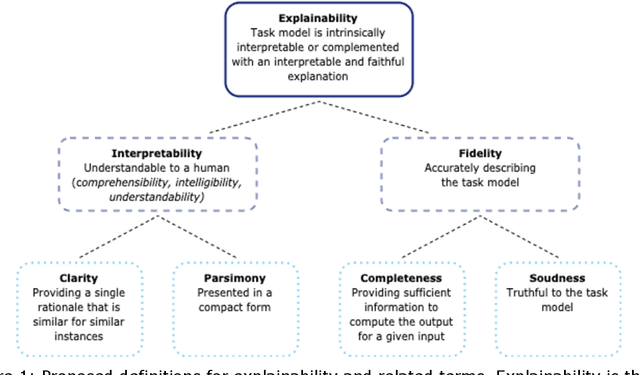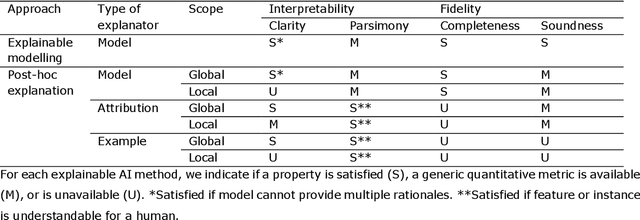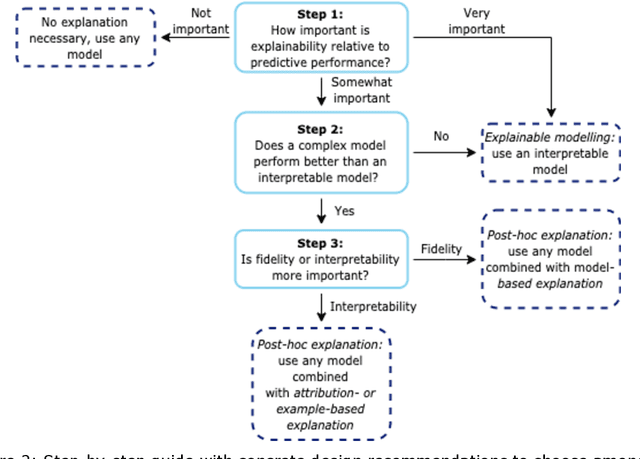The role of explainability in creating trustworthy artificial intelligence for health care: a comprehensive survey of the terminology, design choices, and evaluation strategies
Paper and Code
Jul 31, 2020


Artificial intelligence (AI) has huge potential to improve the health and well-being of people, but adoption in clinical practice is still limited. Lack of transparency is identified as one of the main barriers to implementation, as clinicians should be confident the AI system can be trusted. Explainable AI has the potential to overcome this issue and can be a step towards trustworthy AI. In this paper we review the recent literature to provide guidance to researchers and practitioners on the design of explainable AI systems for the health-care domain and contribute to formalization of the field of explainable AI. We argue the reason to demand explainability determines what should be explained as this determines the relative importance of the properties of explainability (i.e. interpretability and fidelity). Based on this, we give concrete recommendations to choose between classes of explainable AI methods (explainable modelling versus post-hoc explanation; model-based, attribution-based, or example-based explanations; global and local explanations). Furthermore, we find that quantitative evaluation metrics, which are important for objective standardized evaluation, are still lacking for some properties (e.g. clarity) and types of explanators (e.g. example-based methods). We conclude that explainable modelling can contribute to trustworthy AI, but recognize that complementary measures might be needed to create trustworthy AI (e.g. reporting data quality, performing extensive (external) validation, and regulation).
 Add to Chrome
Add to Chrome Add to Firefox
Add to Firefox Add to Edge
Add to Edge